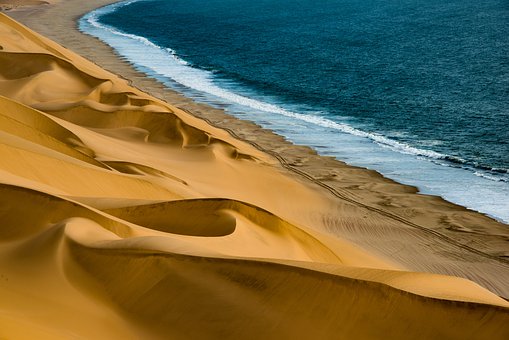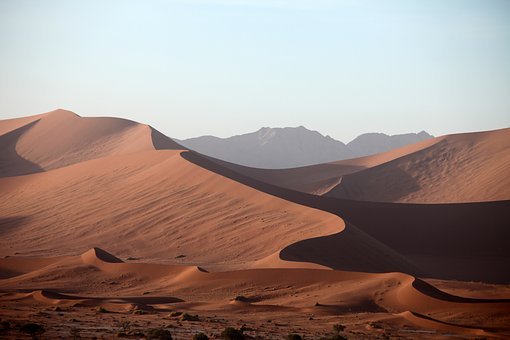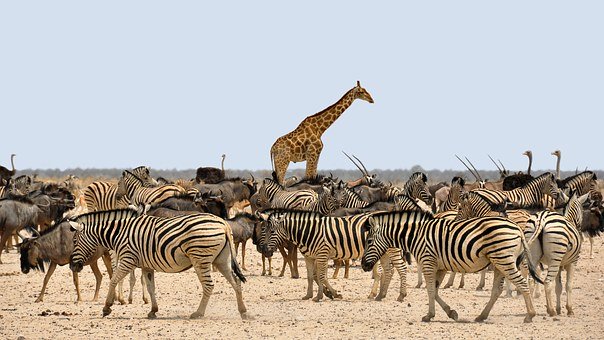| Namibia
- Like No Other Place On Earth by James Weis
Situated between the Kalahari
Desert and the South Atlantic Ocean along the southeastern shoreline of
Africa, Namibia is known for its contrasting landscapes including deserts,
seascapes, boundless plateaus and rock canyons. In addition to its vast
array of rich natural resources, Namibia features a solid contemporary
infrastructure as well as diverse traditional cultures -- it is a magnificent
country to visit.

Land of Contrasting Landscapes
Namibia is home to the desolate
Namib Desert, with its high dunes and extraordinary sense of space, which
is said to be the oldest desert in the world. In fact, it is estimated
that the Namib is as much as 80 million years old. Namibia also boasts
the second largest canyon in the world (next to the Grand Canyon), the
Fish River Canyon. This enormous gorge spans a distance of approximately
160 kilometers. Formed around 500 million years ago, the gorge was created
by water erosion coupled with the collapse of the valley bottom due to
movements in the earth's crust.

The canyon is part of a Nature
Conservation Park and has become a popular hiking destination featuring
a path of roughly 86 kilometers. The central plateau, with its thorn bush
savannah and jagged mountains, rises unexpectedly from the plains. In the
northern area of the country, landscapes include everything from the dense
bush and open plains of the great Etosha Pan, to wooded savannah bursting
with lush vegetation.
Safari adventures
Sometimes known as the "country
of contrast," Namibia not only offers the safari adventurer amazingly diverse
landscapes but also an ample amount of wildlife (the world's highest concentration
of wild cheetah and almost 70 percent of the continent's birds), enormous
vistas and a population that speaks more than 16 languages and dialects.
Where else in the world can you experience such unsurpassed beauty and
diverse landscapes complemented by a truly spectacular coastline? In addition,
the timelessness of this country is reflected in dinosaur footprints preserved
in sandstone, prehistoric rock art, and the ancient fossil plant, Welwitschia
mirabilis.

If you're a photographer,
Namibia is like heaven on earth. Namibian Wildlife In addition to the vast
array of natural beauty that makes Namibia such a perfect choice for a
safari, it is also the natural habitat for a wide variety of endangered
species including the Puku antelope (occurring in Namibia's Caprivi area),
the Orbi and the Black Rhino. In fact, there are more than 20 species of
antelope in Namibia including the Eland and the Gemsbok.
In the seaside retreat of
Swakopmund, you can take a boat journey and view seals, dolphins, whales
and penguins. Although Namibia is probably the least known of the Southern
African countries, the attractions and topography are unlike anywhere else
in the world. When you go on safari in Namibia, you will experience the
opportunity to explore culture, wildlife and landscapes that will leave
a lasting impression.
Top
|
| About the author: Eyes
on Africa, an African safari company, boasts an extremely knowledgeable
team of staff members, who are passionate about every aspect of travel
to Southern Africa, including its wildlife and safari destinations.
When you're ready to plan your African safari, a holiday in Africa, or
if you just have questions, please feel free to contact us toll free at
800-457-9575 or visit our web site at www.eyesonafrica.net/contactus.htm
and complete an information request form. |






